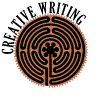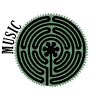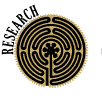Characters do things. They feel things. They hear things. They say things. They think things. They go places. They can walk, run, leap, and jump. They may sit and rock in a rocking chair. They may just lie in bed, sleep, and dream. But the important thing is that characters act. And it is precisely these actions that show us just what kind of imaginary people characters are—friendly, sad, nosey, happy, confused, angry, or inventive. And we need to know because something always happens in great stories. Character determines the outcome.
Earlier this month, Søren sat on the couch chuckling to himself, turning the pages of an old favorite. It’s Lewis Carroll re-imagined. Christopher Myers keeps the text the same but re-imagines the beast as a basketball-playing-Jabberwocky. And the protagonist? Well, he becomes a small boy with basketball-shaped-stars in his eyes.
What fascinated me about the scene was what happened when the book was closed. Søren smiled, got off the couch to rummage around the atelier for paper, scissors, and tape. Silently he concentrated, cutting shapes and connecting them until the characters emerged. Then he swept up the scraps, set his characters to hold the gesture, and walked away from the table without a word.
I know what he was up to. This was literary analysis at its best. Carroll’s Jabberwocky is a larger than life, but there is no doubt that the storm of neologism and nonsense qualifies it as a very difficult read. To most, Søren’s hive of post reading activity might be deemed at best a responsive craft. But Søren was actually deep in thought. This post-reading activity was uniquely contemplative, was Søren’s way of unpacking Lewis Carroll’s poem and the consequent reimagining of Christopher Myer.
And I know where Søren’s pondering will lead. It will lead to an idea. Sometimes we begin with a study of someone else’s idea to incubate an original idea of our own. So it might not be this week, maybe not even next, but I’m sure Lewis Carroll and Christopher Meyer offered fodder that has been sufficiently tucked away in the mind of the apprentice.
—Kim








